#here's to many more years of observing each other lives through the interwebs <3< /div>
Explore tagged Tumblr posts
Note
coolest mutual

#this is my gold medal :')#the feeling is mutual L :)#oh shit#The feeling is MUTUAL- Eh eh??#I'm so funny :)#but in all seriousness#the same is true for you!!!#i love you my goth punk maryland pack rat!!!#you're pretty fucking awesome dude#and I will cherish this medal for the rest of my life#here's to many more years of observing each other lives through the interwebs <3
3 notes
·
View notes
Text
The Process of Great Ideas (Musings of an art student)
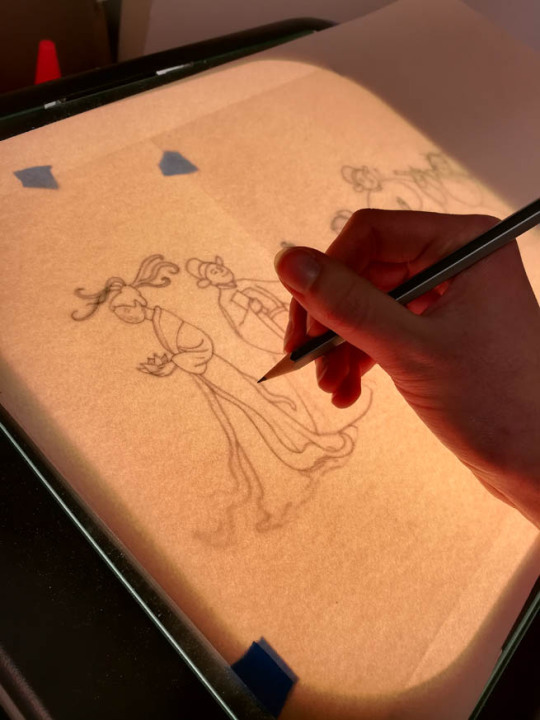
I am beginning to appreciate the process of coming to great ideas. Perhaps this is the one most valuable lesson I’ve learned this first month of the school year.
We can have great, awesome sparks of inspiration at any time. We can have “great ideas” in an instant.
But when we go to put that into a complete, fully rendered drawing or painting, we can’t translate that idea perfectly from the get-go. This is so frustrating! Even if I can technically draw the thing that spawned from my head, what ends up on the paper typically isn’t as epic, as beautiful, as detailed, as intriguing or as visually interesting as the vision from my imagination. I take a moment to stare at what I've drawn and I wonder, ummm so how could someone look at this and feel the same excitement about it as I did when I started this? Because it sure don’t look as epic as I imagined.
In part, I realized this as I was copying other artists’ work that I deeply admired (not to steal it of course, just to learn and study their work). When I saw their artwork, I felt a rush of excitement. :D BIG GASP “OH WOW THAT’S BEAUUUUUTIFULLLLL!!! I lovvvvvvvvvve it I love it!!!” And when I did master copy of their work, I found I could recreate much of that same feeling. But otherwise, when I flip through my own sketches, I miss that feeling. :/ Part of that right now is because much of my own drawing is focused on improving my technique and my skills observing from life, so I draw a lot of people studying or looking bored, and random objects and plants I pass throughout the day. But I still have plenty of my own imagined, conceptual types of sketches. And although they were all sparked by some intriguing idea, they don’t command any viewer’s attention.
So. Then we go to the present reality in which I am starting my first real illustration classes, and I have to come up with 15-30 thumbnails for each project. For whatever reason, this does not sound like very many at all in my mind, but this is still a huge increase from the 6 thumbnails I had to come up with in high school. However, let me tell you that 30 thumbnails takes me a couple of hours of deep brain work, and at the end I feel like I maybe have 2 or 3 fairly good ideas. And even at the end of 30 thumbnails, I feel like there’s something better out there I have not yet uncovered. And whatever that idea is taunts me.
(Here are a few of those ugly thumbnail pages. It’s not always about looking pretty, but exploring and getting ideas onto paper-therefore eliminating a lot of ideas that just ... don’t ... work.)

Is there anyone else out there on the interwebs who has felt similarly? I have loved art for a long time, but it’s only been recently that I have experienced this strong push, or this nagging. For whatever reason, the only analogy I can visualize is octapus tentacles (they’re pumpkin-orange in color) reaching out and taunting and tugging at me (not violently but firmly and persisteringly(?)).
It must be the Octapus of My Artistic Aspirations. Come, young art student, do or do not, there is no try.
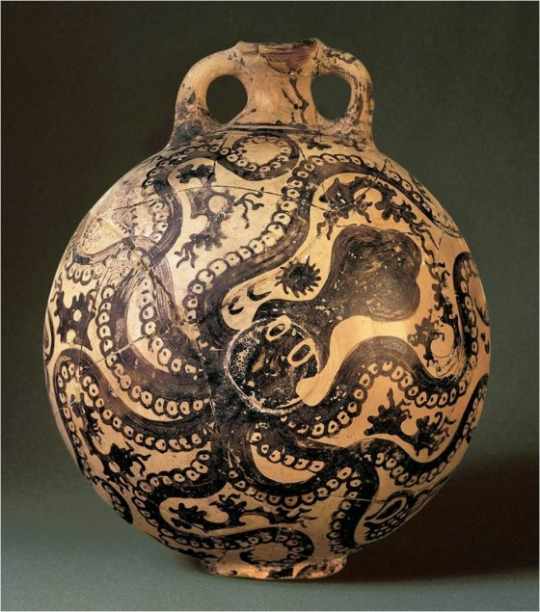
(That’s the Minoan Octapus Flask from c. 1500 B.C.E. One of my favorite ancient art objects.)
But back to the point!
The lesson I’m learning right now is that creating a work of art that is inspiring, that’s engaging, that people can really latch onto, and that you can say honestly communicates the vision you started with, is a process. It takes time, it takes nurturing, it takes energy and revision and work.
Nurturing. I like that word, instead of just simply saying “work”, because nurturing has the natural diligence that comes along with love. Nurturing is passionate work, and it does not force or push too hard or too quickly. It’s persistent and diligent. And nurturing is a very rewarding kind of work.
For me, right now, nurturing my artwork is about taking my sketches and loving the ideas which inspired them whilst treating them more like sticky notes, simple, quickly jotted-down ideas. Then I go into a great exploration and revision process. The exploration and the revision are simultaneous. They must be for at least a while, or my work will become static and boring, lifeless and dull. I can’t be too hesitant to try something even if I think it’s crazy, as long as I am in this stage. Next I evaluate. Am I staying true to my vision, or better yet, am I creating a better vision? If so, I can make whatever small tweaks I want to my thumbnails and then start the “comps”/final piece (”comp” is design school/industry jargon for an art piece that is much more developed than a thumbnail, offers a good depiction of what the final piece will look like, but isn’t yet the finished product). At my present state, I generally do not think my thumbnails are aligning with my vision, so then I dig in real deep, figure out why it isn’t working yet, assess whether I am realistically capable of making those alterations, and then I do my best to improve what I’ve got. At some point, I just have to move forward and finish what I started whether it lives up to my hopes and dreams or not. But I do my best, and I do my best starting out in the idea/thumbnail/development stages.
That’s my plan for here on out, at least.

Just remember to be practical and use good judgment. Even the artists I most admire admit that their end result is typically different from what they envisioned. Some artists, I’d say especially young and developing artists, get really frustrated when they don’t achieve the results they hoped for. My suggestion is to remember and appreciate how far you’ve come. If there’s one thing I’ve learned in all my life, it’s that I’m ALWAYS learning. So I have the potential to improve. And so do you! Just keep nurturing those skills. Little by little you’ll improve. There’s up days and down days. We all do. Just keep trucking along, and never forget why you first loved it.
(This is really long. Should I add pictures? Would that help your eyes read this textbook of a post? Haha, I’m so great at tumblr, guys. xD) **Goes back to add pictures :) **

#inspiredartstudent#inspired#art#learn art#practice art#always learning#art student#college student#dream big#vision#ideas#ideate#musings#college student musings#octapus#tentacles#octapus analogies#am i right#novice tumblr person newb#nurture#musing#thumbnails#creativity#illustrate#creative process#immortal#mythology#chinese lore
0 notes
Text
New Year, New-robi
Hello again rafikis,
Thanks for following my journey so far!
Although it feels like 2019 was yesterday, I’m about to ring in my 5-month anniversary here in Nairobi. Over the past couple of months, I’ve been lucky to welcome several visitors to this great country, spend more time in rural communities and local watering holes (not literally #TIA), and even just get accustomed to a mundane daily routine in this exoticized place where I used to be a wide-eyed visitor. All of this has helped me see Nairobi through new eyes and given me greater perspective on this fascinating metropolis.
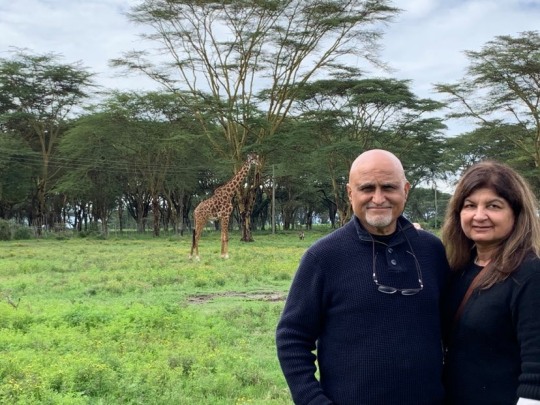
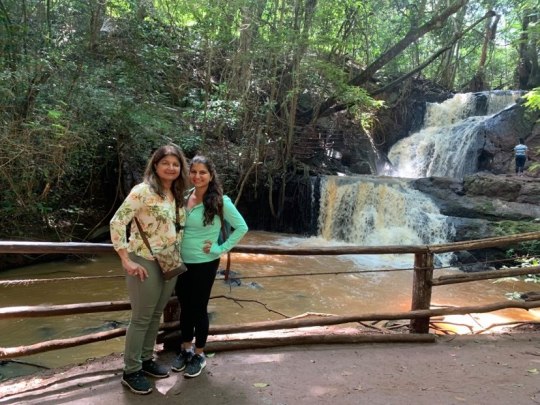
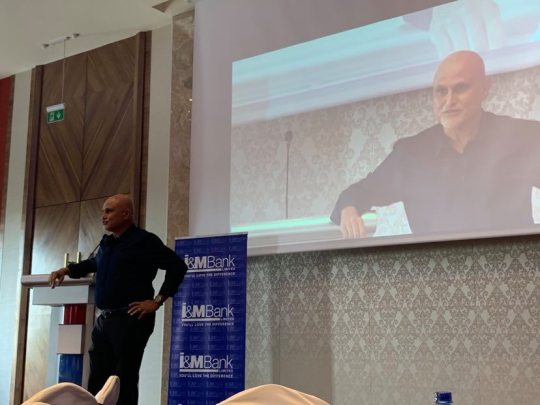



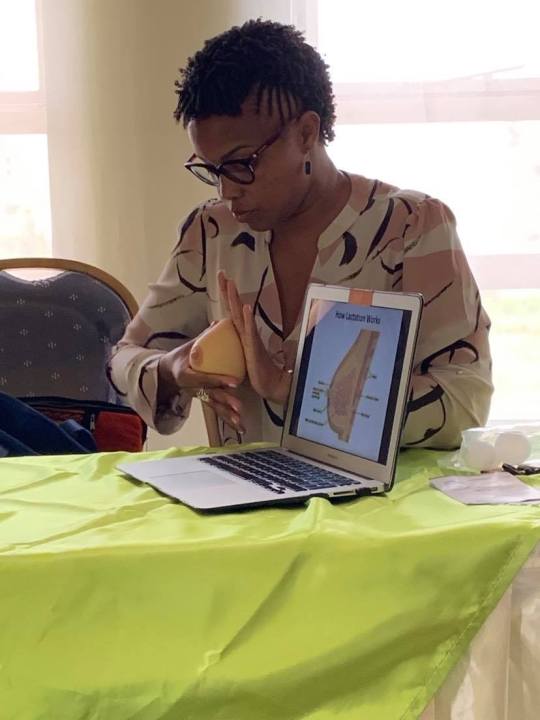
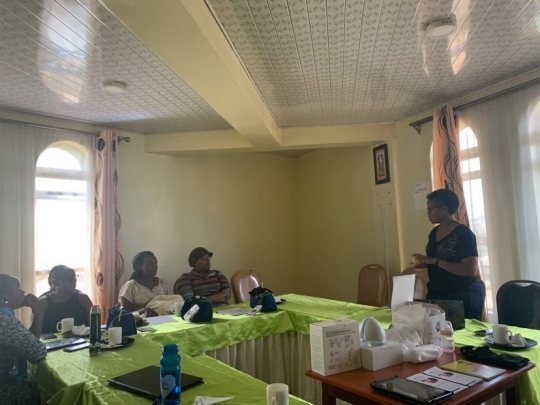


Even if my observations aren’t any more insightful, I’m hoping that, at the very least, my Swahili has improved after spending a few months here. Although I won’t lie, most of these sayings are from the interwebs (except the last one which is a Papa Jamal classic).
1. Umoja ni nguvu: Unity is strength
For anyone who has moved from a small rural town to a big urban city, you’ll know that one of the most noticeable differences is the level of diversity - in race, language, income levels, religious beliefs, political views, food, fashion, architecture, you name it… and often, this diversity is unfortunately correlated with conflict, violence, or a clash of civilizations.
Countries in Africa tend to benefit (or suffer) from this diversity inherently, thanks to the colonial legacy of how land was divided on the continent. Homogenous tribes and cultures were separated by borders arbitrarily drawn by European colonialists, creating some of the most ethnically diverse countries in the world. Nairobi, being a large, cosmopolitan African city, embodies this diversity on many levels: not only through a mix of Kenyan ethnicities, cultures, and perspectives, but also a smattering of the colourful mosaic of people who have immigrated here from across Africa and the rest of the globe.
At the risk of sounding like I’m making a political statement, which I am certainly not qualified to do yet, I would say that these diverse groups seem to live here in relative harmony. I wouldn’t go so far as saying Nairobi is safe - pretty much everyone who lives here has a story about a robbery or mugging (myself, unfortunately, included). However, given that its bordering nation, Somalia, known to be one of the most homogenous in Africa, has suffered from decades of unrest and infighting, you could conclude that greater diversity does not necessarily mean greater conflict.
Gaining a deeper understanding of Nairobi’s complex history has helped me untangle the resulting tapestry of cultures that has developed here over time, from large Bantu tribes like the Kikuyu, to the not-so-lovingly-named Kenyan Cowboys who remained here since the British rule, to the Indian ancestors of the railway labourers brought over by the Brits, the Arab traders who moved inland from the Swahili coast, to the more recent Chinese settlements that have formed as a result of their investments in infrastructure. Interacting with a broader range of communities here has given me a more nuanced perspective on the divergence between conservative and progressive opinions on religion, politics, gender roles, relationships, sexual orientation, family structure, and values that exist in this city. At the same time, I’ve been fortunate to experience the culture and creative expression that blossom from this juxtaposition of traditional and edgy, in the form of music, art, comedy, and dance, while also revelling in the ability to flip seamlessly from nature reserve to bustling city a heartbeat and switch between wellness retreat to raging nightlife within just a short Bolt ride. Though diversity can be seen in all flavours and colours here, Nairobians prosper by recognizing that there is more strength in unity than conflict.
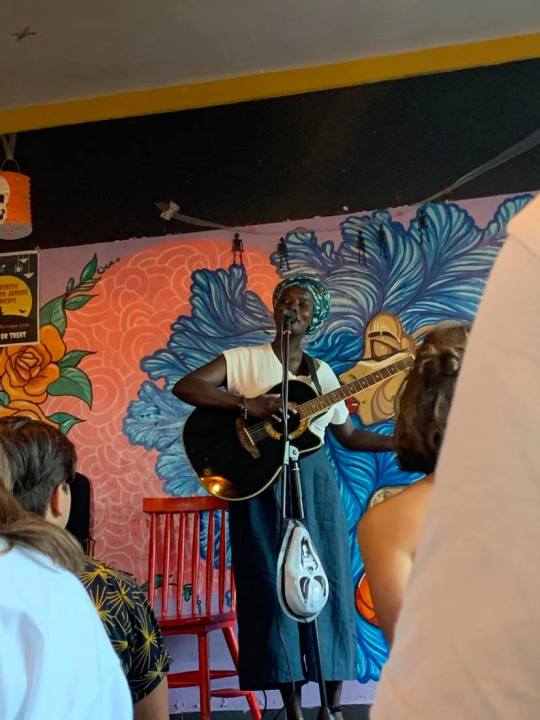





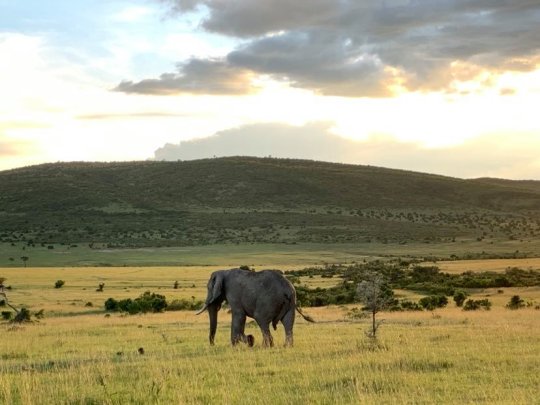
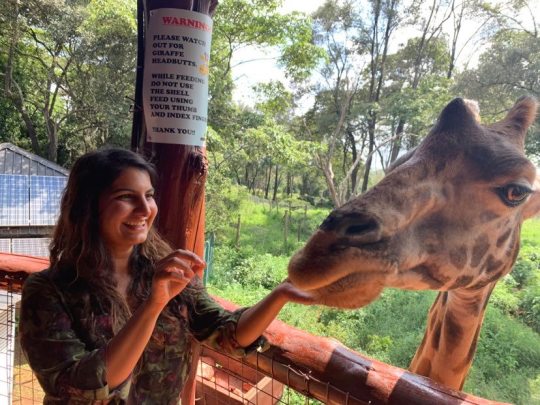

2. Adui wa mtu, ni mtu: The enemy of man is man
Of course, it’s not all sunshine and rainbows here (in fact, the rains had been non-stop for months!) - you can’t have a conversation about Kenyan life without addressing the vast inequalities and corruption that exist. For the billions of dollars invested in the country through grants, foreign aid, and impact investment, there are still gaping holes in infrastructure, healthcare and education that are yet to be tackled. It seems that politicians, public officials, donors, investors, and aid workers might be getting in their own way when it comes to making significant progress on the systemic issues that plague the country. The war on corruption makes daily headlines here yet many parts of policy making, procurement, regulation, and enforcement are driven by political agendas and misaligned financial incentives.
Even policy efforts that I generally support can by driven by a politicized PR angle. For example, Kenya’s ban on plastic bags, known to be the toughest in the world, took 10 years to implement and enforce successfully. While this policy has made a significant impact on waste management, animal health, and overall environmental protection, it was championed by a highly publicized race for implementation among East African governments. One could argue that the ends justify the means, now that 24 African countries have successfully banned plastic bag use, until you step back and consider the greater threats to environmental conservation like the widespread use of diesel fuel or practices like trash burning that are still prevalent in these countries. Similarly, and closer to home for me, much fanfare has been made about maternal employment and breastfeeding policies in local media, now that all employers are required to provide a lactation space for new mothers. However, due to their non-existent enforcement strategy, only 40 companies across Kenya have actually created lactation rooms so far.
While these political concerns may seem lofty, they can become significant considerations in making career choices and conducting daily life in this country. To commercialize a new breast pump in this market, I know I’ll need a well-connected network that spans government, regulatory bodies, distributors, retailers, healthcare providers, and key opinion leaders to counter the inevitable pressure to comply with the bribery and bureaucracy that often infiltrates these sectors. Many of the industry conferences I’ve attended aim to tackle these challenges by crowd-sourcing solutions within the community or, at the very least, encouraging key players not to concede to this systemic corruption.
On a daily basis, while it’s impossible not to confront your privilege as a foreigner living here, it is also difficult to know how to maximize your positive impact: do you donate to your favorite charity, give cash directly to the people begging on the street, volunteer for programs in the informal settlements, or advocate for further policy change and enforcement through your network? The complex system of incentives and unintended consequences make it impossible to calculate the net impact of your every action. Organizations like “Give Directly” have extensive research on the positive impact of unconditional direct cash transfers to individuals living in extreme poverty, which eliminate the potential bureaucratic redundancies of social interventions targeted at these communities. My personal conclusion is that as long as we aim to ensure that man does not become the enemy of his own good intentions in these efforts, we can work towards making a net positive social impact.


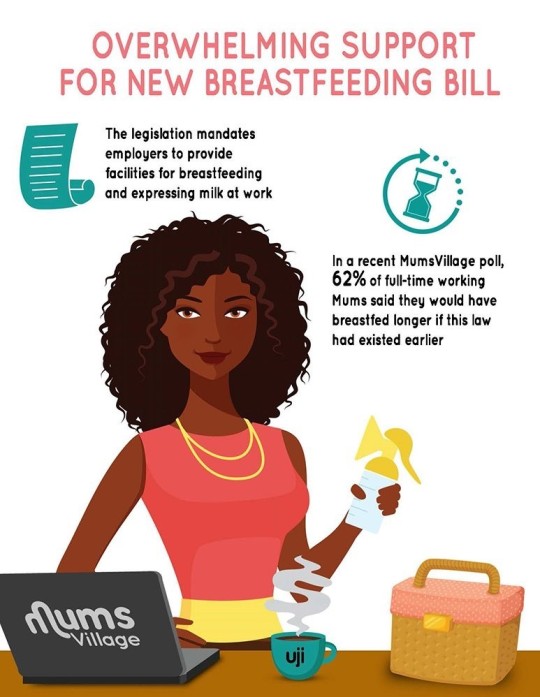

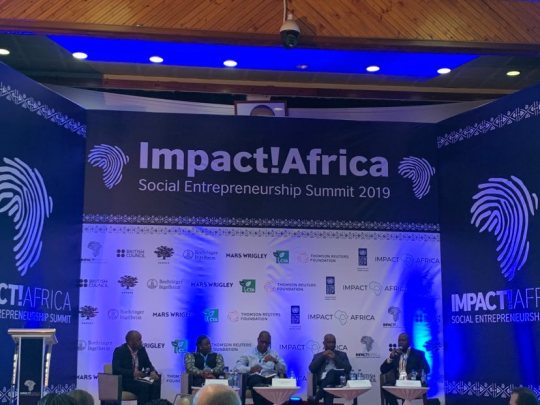
3. Haba na haba hujaza kibaba: Little by little fills the pot
Whatever qualms you might have with Kenyan society, if there’s one thing you can commend Nairobians for it’s their hustle. Everyone from your housekeeper to your manager is likely rocking a side-gig, whether its delivering Jumia orders or semi-professional stand-up comedy. Before Nairobi became a hotbed for entrepreneurship and terms like ‘impact investing’ were even invented, Kenyans had been pitching tents to sell their farm’s produce on the street and exporting their handicrafts around the world. Since then, strategic public and private sector efforts have continued empowering these entrepreneurs; for instance, through significant investments in enabling technology such as mobile payments.
All that to say, when it comes to innovative ideas and self-employment, I have known Nairobians to be extremely optimistic and perseverant. Which is why I am always pleasantly surprised to hear those three words that every girl dreams of, after I describe my business to any Kenyan: “It will work.”
This simple phase hits on a very special insight that is an important ingredient in the makings of every entrepreneur: an unabashed optimism that things will work out. And if they aren’t quite working yet, it’s only a matter of time and hard work until they do. Little by little, we will all get where we need to go.
When you are starting to build the foundation of a business and testing the assumptions that are the basis of your idea, this type of encouraging and frequent reassurance can make a world of difference. While it’s important to be realistic, or even borderline cynical, about the positive market feedback you receive in contrived research settings like focus groups, sometimes it’s just nice to take a moment and indulge in some external validation from a total stranger that you’re not totally out of your mind - “it will work”.
And this is the way we all support each other and survive here in our little bubble of dreamers and doers. Things are not always easy and sometimes you bump into cultural clashes or politics and bureaucracy, but these are all just hurdles in the rat race that we idealists happily skirt around in pursuit of our nobler ambitions. Knowing that we are all hustling and working towards the same broader goals, we gladly go out of our way to lend a hand, partner with each other, subsidize our services, and give free advice. Despite not living in an affluent country, people here are rich with positivity, tenacity, and generosity.



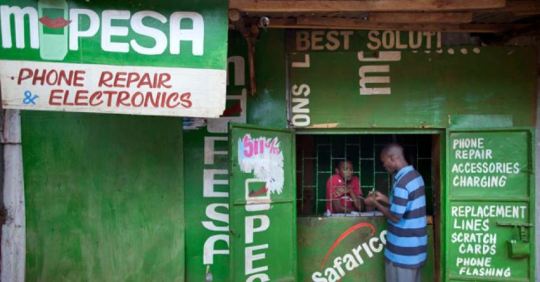

Asanteni sana! Until next time,
Sahar
0 notes
Text
What Redfin’s IPO means for real estate
http://ift.tt/2tqebmq
Reposted with permission from Rob Hahn.
I have been waiting, wanting, hoping for Redfin to go public for a few years now. For a bunch of reasons, mostly having to do with getting another company in real estate to have to report publicly about its operations and its numbers.
Well, my wish has been granted. Redfin just filed its S-1 to go public a couple of days ago.
I don’t have any strong opinions at the moment, besides wishing Glenn Kelman and crew lots of luck. But looking through Redfin’s S-1, I had a few random thoughts. I figured I’d share them with you all, taking a bit of a break from the internal machinations of NAR.
This is a game changer. The industry as we know it will never be the same after Redfin’s IPO. I’ll post on that later, but I wrote most of this before I started thinking harder, so I figure I might as well share this with you all while I work on the bigger piece.
$100 million IPO? Valuation?
The first thought that struck me was that if Redfin manages to price correctly and raise $100 million from its IPO, it would dwarf what Zillow managed in its IPO in 2011: $69.2 million. And we’ve all seen what Zillow became after its IPO.
What will Redfin be after its IPO?
It’s difficult to compare apples and oranges (the two companies have totally different business models, after all), but if Zillow has $846 million in 2016 revenues, and Redfin has $267 million in 2016 revenues, that’s approximately a 3:1 ratio. Zillow’s current market cap is $9 billion. So that would make Redfin worth about $3 billion?
On the other hand, Redfin claims to be a brokerage company, so maybe the proper comp is Realogy? Well, Realogy’s market cap is about $4.5 billion on 2016 revenues of $5.8 billion. That’s right; its valuation is lower than its revenues — by $1.3 billion.
And Re/Max, a franchisor, has a market cap of about $1.7 billion on $176 million in 2016 revenues. It’s hard to think of Re/Max as a comp for Redfin though, because they’re so different.
Guess we’ll see.
Comparing to Zillow
One of the more interesting comparisons is Redfin and Zillow at the time when Zillow went public.
The big obvious thing to note is revenues. Zillow had $30 million in revenues in 2010 when it filed to go public; Redfin has $267 million in revenues in 2016.
But the two things I thought were most interesting was how much each company was spending on sales and marketing and on technology.
Zillow in its S-1 said that it spent the following in 2010:
Sales and marketing: $14.9 million
Technology and development: $10.6 million
Redfin in its S-1 reports:
Marketing: $28.6 million
Technology and development: $34.6 million
Redfin is way ahead of Zillow in terms of where the two companies were at the IPO filing.
Now, of course in 2017, Zillow dwarfs Redfin in every measure: revenue, technology spend, marketing spend, etc. In 2016, while Redfin spent $34.6 million on technology and $28.6 million on marketing, Zillow spent $273 million and $380 million, respectively.
But, let’s recall that in 2011, when Zillow was going public, the top dog in online real estate was Move, Inc., which operates realtor.com. And Move was magnitudes larger than Zillow back then, similar to how Zillow is magnitudes larger than Redfin today.
For example, 2011 Move, Inc:
Revenues: $191.7 million (versus $30 million for Zillow)
Sales and marketing: $68.6 million (versus $14.9 million for Zillow)
Technology and development: $34.7 million (versus $10.6 million for Zillow)
At the time of Zillow’s IPO, very few people thought Zillow was going to be the top dog in real estate within a couple of years. And yet, that’s exactly what happened.
Do some ratios though.
Move : Zillow
Revenues: 6.39
Sales and marketing: 4.6
Technology and development: 3.3
Zillow : Redfin
Revenues: 3.2
Sales and marketing: 13.3
Technology and development: 7.9
In other words, it’s going to be a lot more difficult for Redfin to catch Zillow than it was for Zillow to catch Move. The key spending ratios are dramatically higher for Zillow : Redfin.
This is not to say it can’t happen or won’t happen. It’s just to make an observation.
One difference is that Move didn’t increase its investment into technology as the upstart Zillow was breathing down its neck. Here’s Move, Inc.’s technology spending as Zillow was climbing up:
2011: $34.7 million
2010: $34.3 million
2009: $27.8 million
2008: $26.3 million
2007: $34.6 million
Compare that to Zillow’s technology spend over the past few years:
2016: $273 million
2015: $198.6 million
2014: $84.7 million
2013: $48.5 million
2012: $26.6 million
You find similar patterns in the marketing spend; Move actually decreased its marketing spend over the five years from 2007-2011. Zillow dramatically increased marketing from 2012-2016.
I have a feeling that Spencer Rascoff and crew aren’t going to sit back and watch Redfin go public, ramp up its marketing and technology, become a serious competitor and — do nothing or even worse, start decreasing its own investments as Move once did.
If anything, I could easily see an arms race between those two companies that will suck the oxygen out of the room for everybody else.
We’ll see.
Where’s #StopRedfin?
Finally, the S-1 really makes me think that Redfin should send a case of wine to Zillow or something for providing a smokescreen of distraction as evil personified in real estate.
Because while the industry kept Jay Thompson busy and employed with all of the outrage and #Zaterade and Zillow Fever stuff, Redfin built up precisely that which the Zillow haters constantly harp on Zillow about.
For example, the Zestimate. The industry hates the Zestimate, right? Because no computer can be as accurate as a living agent. Well, Redfin has the Redfin Estimate, which the S-1 describes thusly:
“Our access to detailed data about every MLS listing in markets we serve has helped us build what we believe is the most accurate automated home-valuation tool. According to a 2017 study we commissioned, among industry-leading websites that display valuations for active listings, 64 percent of the listings for which we provided a public valuation estimate sold within 3 percent of that estimate, compared to only 29 percent and 16 percent of the public estimates for the two other websites in the study.”
Mum’s the word, though, huh? Zestimate equals Satan’s spawn. Redfin Estimate, made far more accurate thanks to unrestricted access to MLS data, equals enjoy the silence.
How about the whole “Zillow is going to become a brokerage and disintermediate the agent!”? Well, Redfin is a brokerage — and is actively trying to disintermediate (that is, put out of business) every agent who doesn’t work for Redfin.
In that, Redfin is no different from any other brokerage, who all compete to gain market share at the expense of other brokerages and agents.
But I think about the outrage from the real estate interwebs because Zillow “crossed the line” into the brokerage world with Zillow Instant Offers and wonder why the chorus of crickets when it comes to Redfin.
Speaking of Zillow Instant Offers, that sucker triggered so many fragile, fear-driven agents that there’s a #StopZillow movement complete with website. Amazingly, in one of the announcements about Bob Goldberg’s being named as CEO, the comments are all full of “When are you gonna fight against Zillow?” type of stuff.
Meanwhile, Redfin is debuting Redfin Now. Which is exactly like Zillow Instant Offers, except that no other agents or brokerages can participate. Cool!
And the best part is, you know all that “Zillow is making billions exploiting our data!” stuff that’s like, everywhere? Well, read ’em and weep:
“As a brokerage, Redfin has complete access to all the homes listed for sale in the local multiple listing services, or MLSs, in the markets we serve. MLSs are used by real estate agents to list properties and coordinate sales. Although websites that do not operate a brokerage often have access to these MLSs, the terms of their access vary widely. As a result, brokerage websites often get more listings from MLSs, or more detail about each listing, than other websites.
“Access to this extensive data, paired with local knowledge, lets us give our customers what we believe to be the most comprehensive information on homes for sale.
“Additionally, our streaming architecture is designed to recommend listings to our customers by mobile alert or email soon after these listings appear in the MLS. These advantages in loading listings data and quickly notifying consumers come not just at the listing debut in the MLS, but in recognizing when a price changes or a home sells. For over 80 percent of these listings, we can show the listing on our website and mobile application within five minutes of its debut in the MLS. According to a 2017 study we commissioned, we notify our customers about newly listed homes between three to 18 hours faster than other leading real estate websites.”
Let’s not forget that Redfin was never seriously a listing brokerage, even with its 1 percent commission thing, for years. Most of its revenues came from, and still come from (70 percent or so) representing buyers who come to the Redfin website to view listings of (you guessed it!) other brokerages.
Talk about making billions on the data of real estate agents and brokers, yet, no outrage.
But Rob, that’s OK, because Redfin is a brokerage and a participant of the MLS and has all due rights to all of the data. Well, if you believe Redfin is a brokerage — I guess you also have to believe that OpenDoor is a brokerage. They both offer full cooperation and compensation, after all.
Redfin is not a brokerage, guys. Seriously. Check your premises.
Why do I say that?
Because there is no way in hell Redfin is going public at brokerage valuations. Nobody who matters thinks Redfin is a brokerage. Look at the coverage in the media — it all mentions Zillow. It doesn’t mention Realogy and Re/Max and HomeServices of America.
Goldman Sachs doesn’t agree to underwrite Redfin’s IPO, if it thinks Redfin is a real estate brokerage. The VC firms backing Redfin don’t allow Redfin to IPO at brokerage valuations.
The reason is simple: money money money!
Zillow’s market cap is $9 billion on revenues of $846 million.
Realogy’s market cap is $4.5 billion on 2016 revenues of $5.8 billion. Realogy’s valuation is below its annual revenues.
If Redfin is a brokerage, making $256 million in revenues and losing tens of millions every year. It’s worth zip. Zilch. Zero. Nada.
If Redfin is a technology company that happens to make money from commissions — it’s worth $3 billion or so (or more!)
I’ll do a bigger post later on Redfin once I’ve thought through some more things and read the S-1 more, but boy, all y’all who are on the #StopZillow crusade are going to be awfully sad when the supercharged Redfin with IPO cash and stock-as-currency comes to eat you all for lunch and makes all of your worst nightmares come true.
Conclusion
I am writing the conclusion after my “let me think about this more” time so, let’s just say that this is a big deal. I can see everything changing in the relatively near future. Yep, big things poppin’ and little things steppin’. For now, enjoy the tidbits of thought above.
VIDEO
Robert Hahn is the Managing Partner of 7DS Associates, a marketing, technology and strategy consultancy focusing on the real estate industry. Check out his personal blog, The Notorious R.O.B. or find him on Twitter: @robhahn.
Email Robert Hahn
from Inman http://ift.tt/2tMUfwg via IFTTT
0 notes